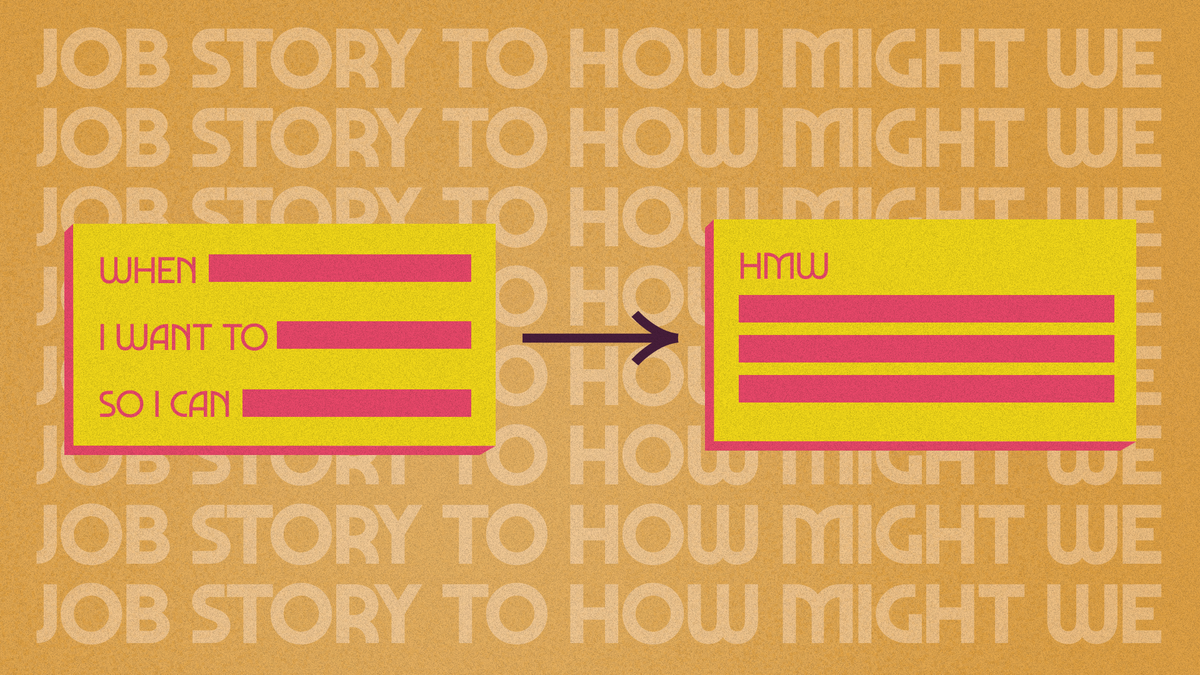How do you convert a Job Story into a Problem Statement/HMW when ideating?
How might we connect job stories to how might we notes and an example of it's application.

From my last post, I broke down how Intercom uses Job Stories from JTBD theory as an input into their design process.
Whilst writing it, I noticed how much the process could benefit from a design thinking exercise called a How Might We.
How Might We notes (HMWs) are a great way to reframe challenges as opportunities in the form of questions.
Where a Job Story is framed from the perspective of the customer, a HMW note is framed from the perspective of the team trying to solve the problem making it easier to comprehend during ideation.
Let’s take this Job Story from the Intercom as an example:
When I'm managing the Support team, I want to know how busy each member of my team is, so I can identify who my highest and lowest performing team members are.
The converted HMW can be broken down into 2 HMW notes:
HMW enable support managers to know how busy their team members are?
HMW enable support managers to identify which of their team members are highest and lowest performing?
The beauty of this framing is that you can then put on your divergent thinking hat on to search for inspiration where this challenge might have been solved elsewhere before shaping your own solution.
Here's 3 examples of how the above challenges can be solved:
How Ilo.so showcases a high-level view of how Tweets are performing

How ilo.so showcases individual Tweet performance

How Plausible analytics separates website visits by time frame

Website visits and tweet performance might not have a direct relationship to employee performance if you're thinking vertically.
If you're thinking laterally, it makes a lot of sense!
Ultimately, the patterns used in each will help you shape an ideal, differentiated solution with a lot of value to your customers.
P.S. Don't forget to continuously check if your designs are positively answering the HMW note. The chances of a feature being adopted will depend on how well the designs answer the challenge.
